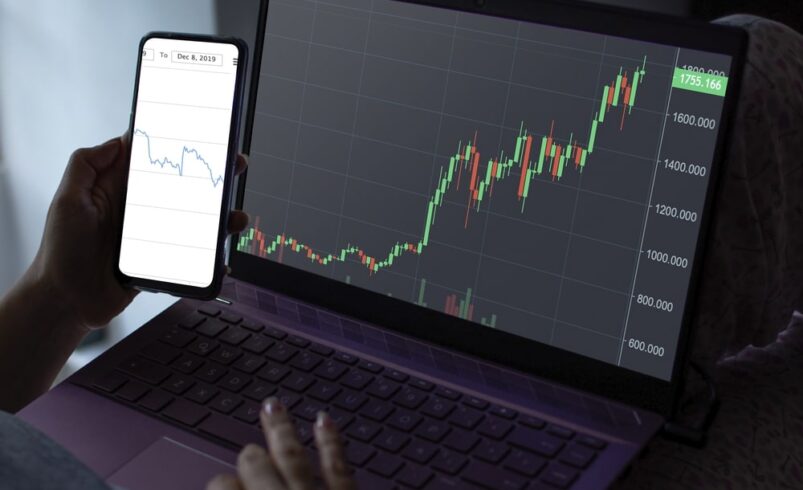The NVIDIA Titan V: A Comprehensive Product Guide

At the top of the graphics processing unit (GPU) game regarding innovation and computational power is the NVIDIA Titan V. The Titan V is designed with professionals cryptocurrency miners, researchers, and enthusiasts in mind. It combines state-of-the-art technology with unmatched performance.
Mining algorithms that gain from deep learning or parallel processing methods may also profit from its Tensor Core support and Volta architecture. The Titan V’s great processing capability has also increased power consumption. This can significantly affect profitability, particularly in areas where energy is expensive.
The Titan V may be suited for mining some cryptocurrencies that are still GPU-friendly, including Ethereum or other altcoins, due to its large number of Compute Unified Device Architecture (CUDA) cores, Tensor Cores, and remarkable memory bandwidth. Mining algorithms that gain from deep learning or parallel processing methods may also profit from its Tensor Core support and Volta architecture.
Technical Features of NVIDIA Titan V
1. HBM2 Memory Architecture
The NVIDIA Titan V uses High Bandwidth Memory 2 (HBM2) technology, providing exceptionally high memory bandwidth and enhanced power efficiency. The Titan V offers lightning-fast data transmission speeds with 12 GB of HBM2 memory and a memory bandwidth of 653 GB/s, enabling smooth multitasking and high-resolution rendering in business visualization applications.
2. NVLink Interconnect
The NVLink interconnect technology on the Titan V enables fast communication between several GPUs. Users can leverage the combined processing capability of numerous Titan V GPUs for increased performance in AI, High-Performance Computing (HPC), and scientific computing applications with the help of NVLink’s ability to enable scalable GPU configurations.
3. Unified Memory Architecture
The Titan V features NVIDIA’s Unified Memory Architecture (UMA), which unifies CPU and GPU memory into a single memory space. This reduces the need for expensive data transfers and enhances system performance by enabling effective memory management and data exchange between the Central Processing Unit (CPU) and Graphics Processing Unit (GPU).
4. Trusted Platform Module (TPM) Support
The Titan V can be used with Trusted Platform Module (TPM) technology for improved security and platform integrity. To prevent unwanted access and manipulation, TPM offers a secure hardware-based platform for storing cryptographic keys, certificates, and other sensitive data. Users can create a trusted computing environment and reduce the danger of malware, rootkits, and other security concerns by utilizing TPM support.
Security Features of The NVIDIA Titan V
1. Secure Boot and Firmware Validation
To guarantee the integrity of the GPU firmware and stop illegal access or modification, the Titan V has secure boot and firmware validation procedures. Through firmware integrity and authenticity verification during startup, the Titan V reduces the vulnerability to firmware-based assaults and protects critical data and GPU-processed algorithms.
2. Hardware-Based Encryption
The Titan V has hardware-based encryption engines that enable industry-standard encryption techniques like Advanced Encryption Standard (AES) to protect data in transit and at rest. These encryption engines provide strong security without sacrificing speed by encrypting and decrypting data at the hardware level. The Titan V’s hardware-based encryption protects customers’ sensitive data from unwanted access, whether transferred over a network or stored in memory.
3. Trusted Platform Module (TPM) Support
The Titan V can be used with Trusted Platform Module (TPM) technology for improved security and platform integrity. TPM offers a secure hardware-based platform for storing cryptographic keys, certificates, and other sensitive data to prevent unwanted access and manipulation. Users can create a trusted computing environment and reduce the danger of malware, rootkits, and other security concerns by utilizing TPM support.
Note:
The Titan V is accompanied by a vast software ecosystem, including TensorRT, cuDNN, and NVIDIA CUDA Toolkit, to accompany its physical capability. With the help of these effective tools, developers may quickly design and optimize applications while fully utilizing Titan V’s capabilities, including Ethereum mining.
The Titan V’s optimized software ecosystem accelerates the development process, increasing productivity and efficiency whether the user is constructing computational simulations, deep learning models, or immersive visualizations.
DISCLAIMER: It's important to know that the stories on this blog are not meant to serve as, nor should it be construed as, advice in legal, tax, investment, financial, or any other professional context. You should only invest an amount that you are prepared to lose, and it's advisable to consult with an independent financial expert if you're uncertain. For more information, kindly consult the terms of service and explore the assistance and support areas provided by the issuing or advertising entity. Our website is dedicated to accurate and unbiased reporting, but it's important to note that market circumstances may change rapidly. Additionally, please be aware that some (but not all) articles on our site are sponsored or paid posts.













